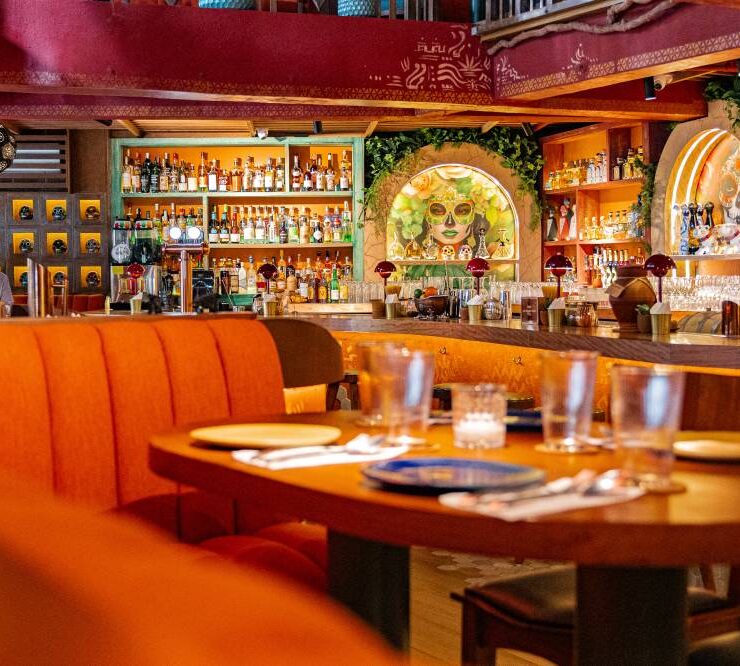How Switzerland’s peaks heal hearts and minds
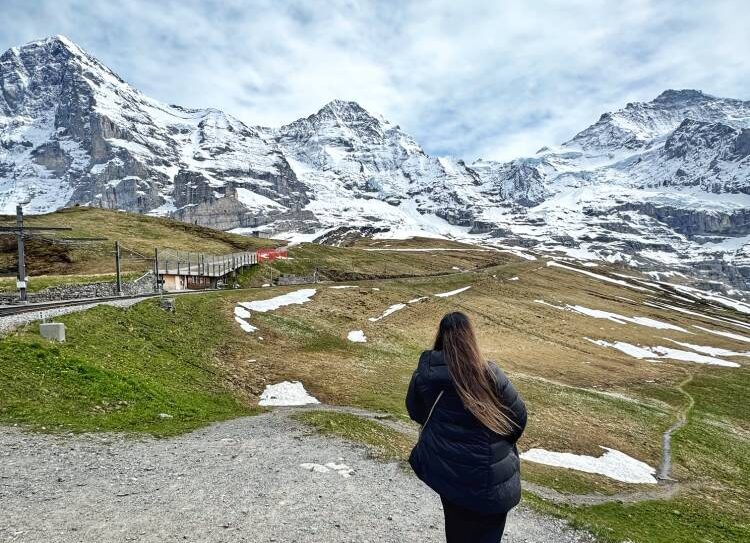
In the final scenes of “Crash Landing on You,” when Yoon Se-ri (played by South Korean actress Son Ye-jin) soared above Grindelwald’s emerald slopes, her paragliding flight was more than just a thrilling adventure—it was a moment of catharsis. Watching the wind catch her parachute at First View, we all saw how the mountains could lift not just the body, but the spirit, too.
For those of us who have wandered these trails, that scene isn’t just cinematic fantasy. It’s a testament to the gentle, unspoken promise of Switzerland’s Alps: that here, in these valleys carved by glaciers and crowned with snow, there’s room enough to lay your heart down and let it breathe.
It’s no wonder the Korean drama became a global love letter to the Jungfrau region. For many Asian travelers, the show was a first glimpse of the grandeur of Lauterbrunnen’s waterfalls and the hushed stillness of snow-dusted peaks in Engelberg and beyond. But more than the scenery, it was the story of Se-ri’s emotional journey—arriving broken and leaving whole—that resonated deeply.
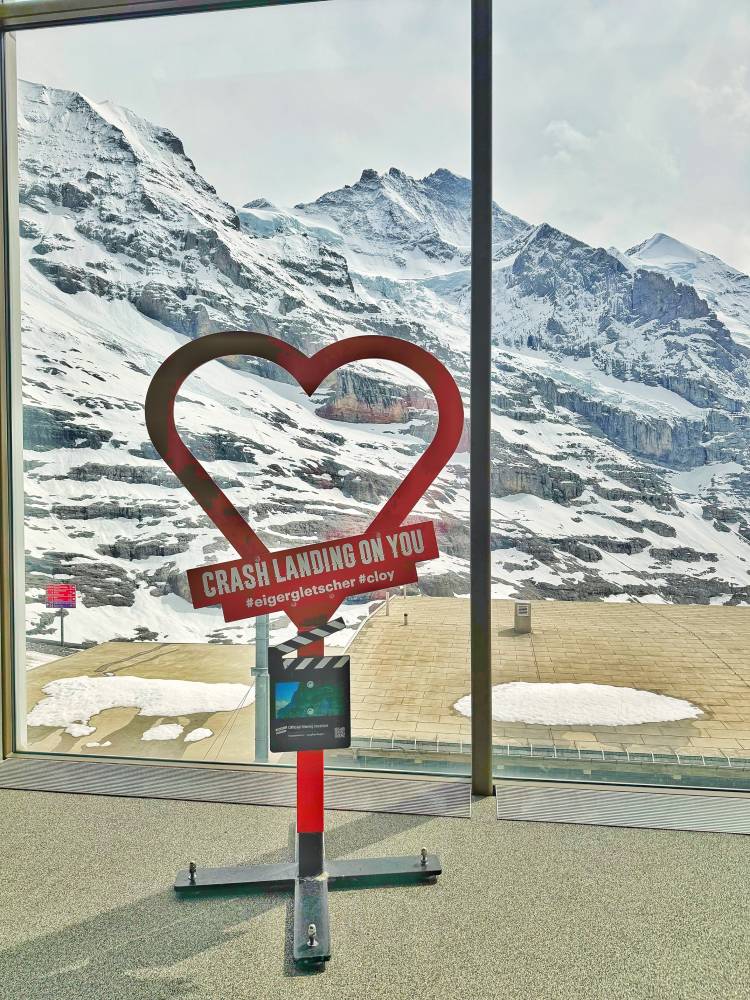
The magic of Switzerland’s mountains isn’t new, of course. They’ve long been places where hearts find solace and clarity. Over a century ago, Thomas Mann captured this spirit in “The Magic Mountain,” his 1924 masterpiece about a young man who travels to a sanatorium in Davos and finds, in the high-altitude air, a kind of spiritual recalibration.
In that sense, Mann’s novel and “Crash Landing on You” share a common thread: the idea that the mountains can heal.
Standing at the edge of the First Cliff Walk in Grindelwald, I found myself reflecting on this quiet power. The vantage platform juts out over the valley, a glass-and-steel testament to the human instinct to chase horizons. Below, the Lauterbrunnen Valley glimmers like a secret: a cleft in the earth where waterfalls tumble over sheer cliffs, and the peaks of the Eiger, Mönch, and Jungfrau stand sentinel.
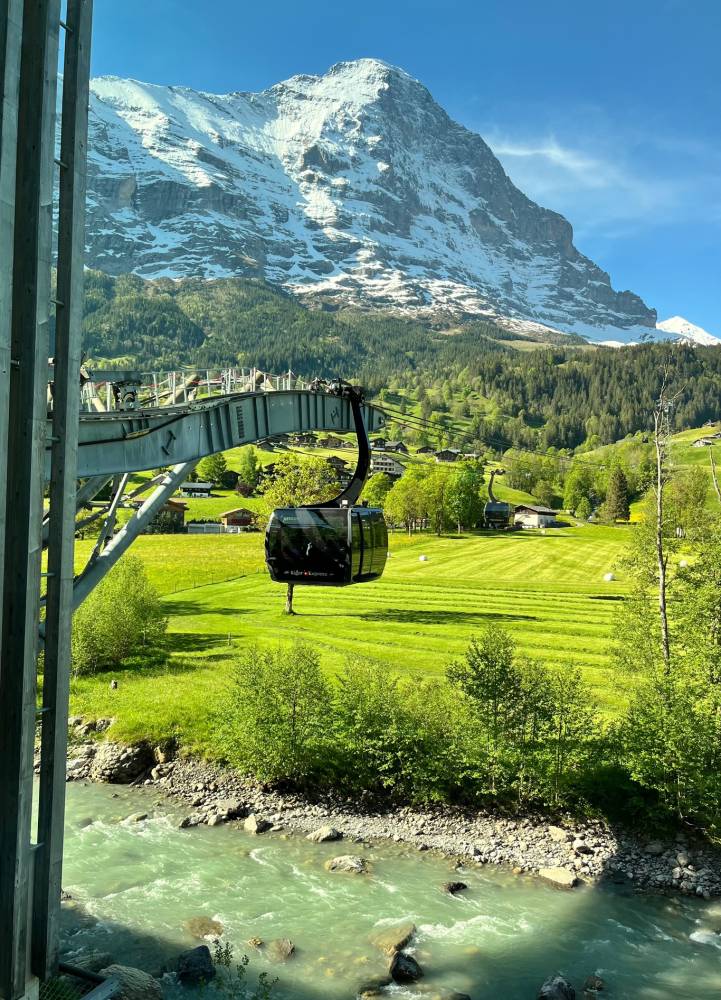

I’d come to Switzerland with a foot injury, relying on a cabin trolley for support. It was a small but stubborn reminder of how even the most beautiful journeys can start with something that weighs you down. But thanks to our guide Mike Cakebread—whose easy patience and deep love for these mountains turned each step into something more than a climb—I discovered that the mountains didn’t care about my limp or my limitations. They cared only that I showed up, heart open and breath steady.
Engelberg and Mt. Titlis offered the same balm: At Titlis, the revolving cable car carried our group into an alpine world where everything—even my worries—felt small against the vast sky.
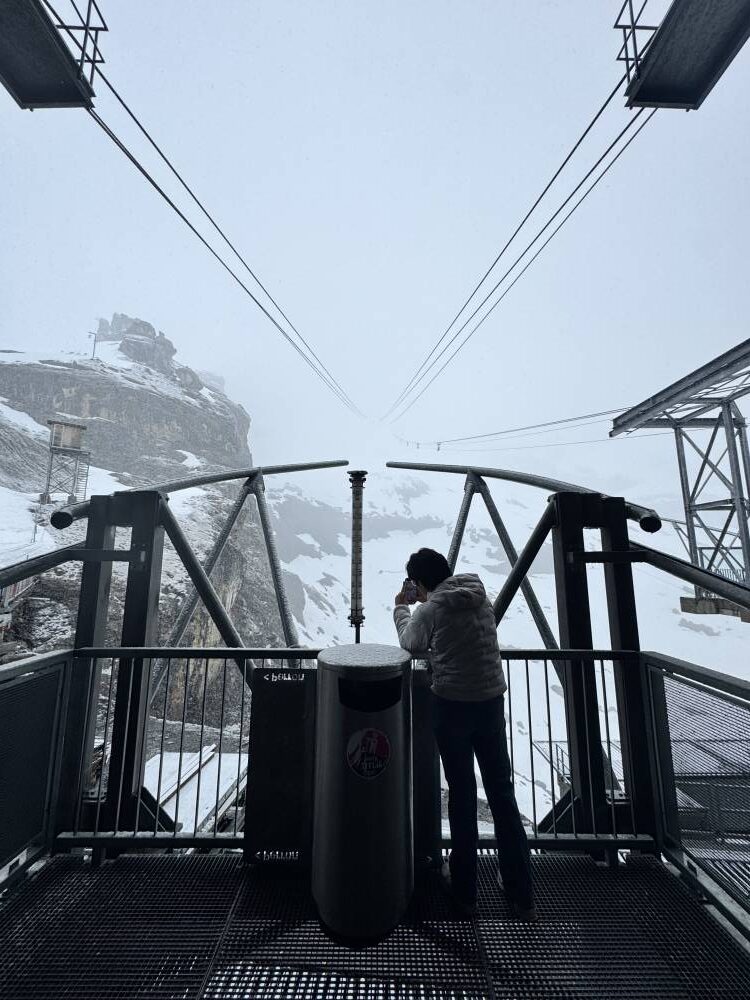
The mountains as medicine
It’s in the movement—the rhythm of your steps on a trail, the pulse of your heart as you crest a hill. The mountains demand your full attention, and in that demand, they offer a kind of meditation. You become part of something older and larger than yourself.
I found this again and again: on the snow-crunching paths of Jungfraujoch, where the air is so thin it seems to sing in your lungs. Even with my trusty trolley in tow, I felt a lightness that had nothing to do with the weight I carried and everything to do with what I was letting go.
In the end, that’s what these mountains gave me: not just a place to heal, but also a reminder that healing isn’t about forgetting the past—it’s about finding the courage to live with it, lightly. There’s a gentleness in the snowmelt streams and a power in the glaciers that seems to mirror the slow, steady work of healing. It’s not dramatic. It’s a quiet recalibration: a new breath, a new horizon.

At the First View platform, I watched a woman waiting to leap into the sky. I thought of Se-ri’s flight and the way her story ended—not with a grand gesture, but with a simple truth: that healing can be as quiet as a mountain breeze, and as patient as the peaks themselves.
For those of us who come here—whether with a heartbreak, a writer’s block, or just the ache of a life that’s grown too loud—the mountains are patient. They have seen generations come and go, wars rise and fall, and still they stand, white and eternal.
So we come back to them, again and again. And that, in the end, is the real magic of Switzerland’s mountains: They don’t just heal the heart—they give you back to yourself.
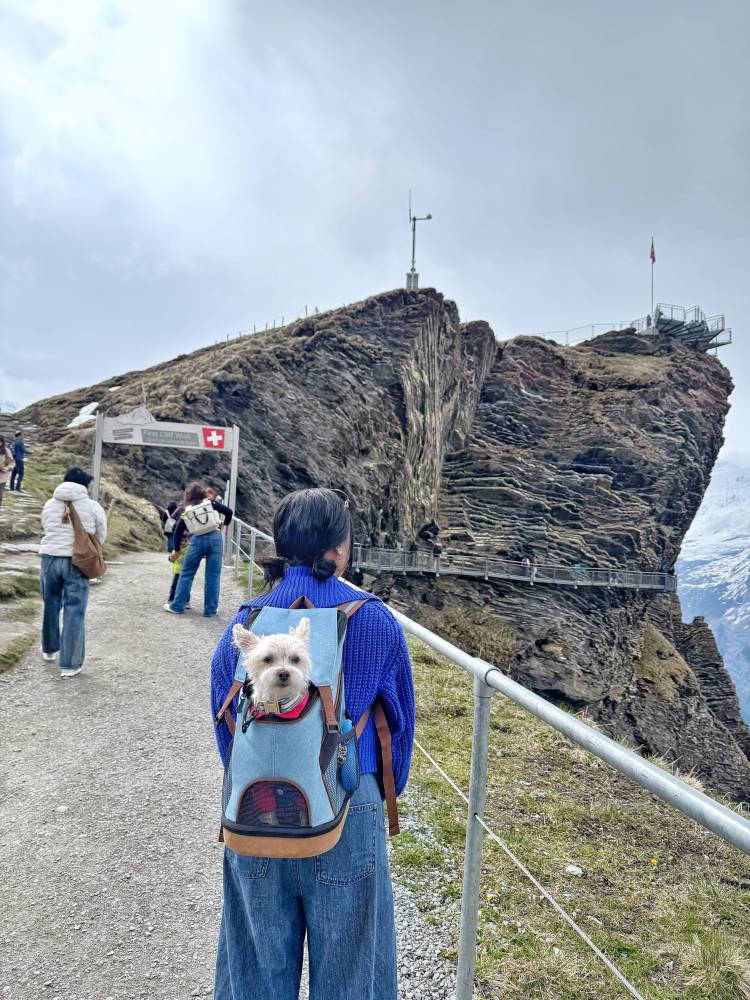
What to see and do
- Explore the beautiful valley of Lauterbrunnen. Wander among its 72 waterfalls and marvel at the iconic view of the church and waterfall—a scene straight from the pages of a fairy tale.
- Board the VIP gondola from Grindelwald Terminal to Eigergletscher for a luxury experience that glides you straight into the heart of the Alps.
- Jungfraujoch–Top of Europe. Step into a different world at 3,454 meters, where icy air sweeps over your face and the view stretches from the Aletsch Glacier to the Swiss Plateau.
- Enjoy an aperitif in the exclusive ice bar in the Ice Palace at Jungfraujoch, a toast to the magic of winter and altitude.
- Visit Kleine Scheidegg at the foot of the Eiger, Mönch, and Jungfrau for up-close views of the famous North Face and easy access to hiking trails.
- Unwind in Grindelwald, a charming alpine village nestled at the foot of the Eiger North Face, perfect for recharging in nature’s embrace.
- Feel the thrill at First View, a vantage platform with panoramic views of the Bernese Alps. From the mountain station, a short walk leads to a windmill-inspired platform that reveals different facets of this mountain wonderland.
- Ride the Titlis Rotair cable car, the world’s first revolving cable car, for 360-degree views on your way to the top of Mt. Titlis.
- Explore the Glacier Cave, Cliff Walk, and Ice Flyer at Mt. Titlis, adventures that reveal the icy heart of Switzerland’s alpine world.
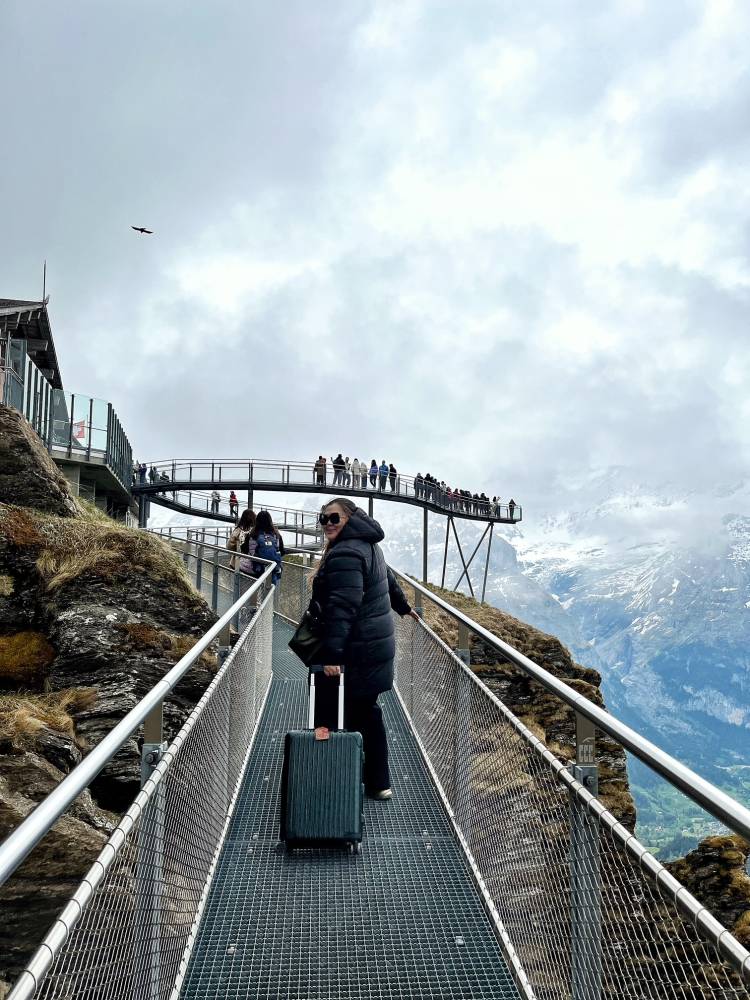

Where to stay in Grindelwald? Tucked at the edge of the village with sweeping mountain views, Aspen Alpin Lifestyle Hotel delivers exactly what its name promises—alpine charm with an elevated sense of ease. A proud member of the Typically Swiss Hotels program, it embodies the hallmarks of the label: traditional chalet architecture, heartfelt hospitality, and locally rooted touches.
After long days in the high altitude, I found comfort in the simplest rituals—a warm soak infused with alpine botanicals, a few spritzes of arnica spray, and the soft quiet that only mountain nights can offer. Four stars on paper, but every bit a five-star stay.
In the end, you don’t need a reason as grand as heartbreak or a literary pilgrimage to go. The mountains will welcome you all the same. Whether you’re chasing clarity, calm, or just really good cheese, Switzerland has a way of giving you what you didn’t even know you needed.
And that hashtag? It’s not just clever—it’s true. #INeedSwitzerland



















